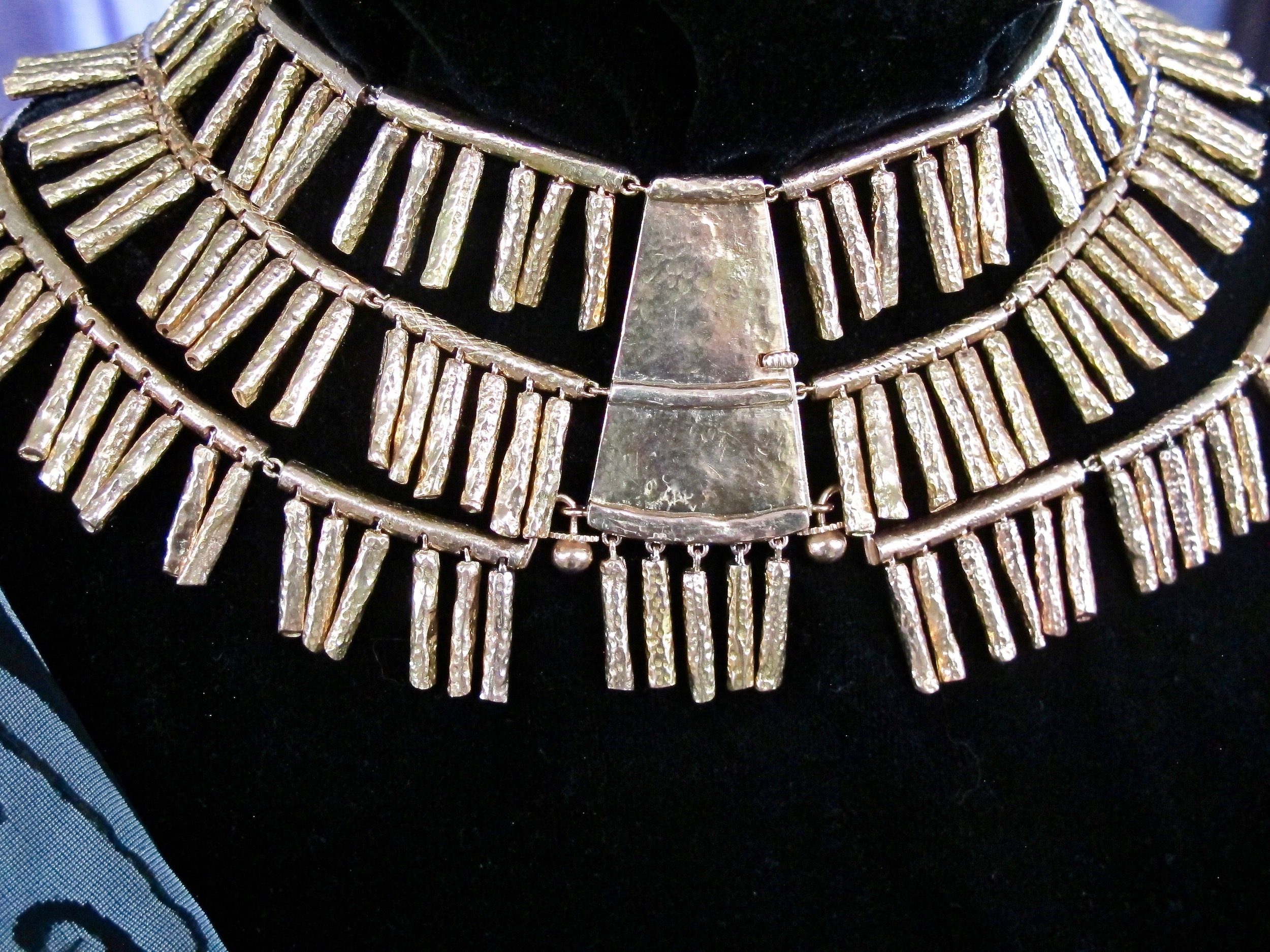This is the jewelry repair process of a rose gold necklace originally designed by Millicent Rogers. She designed this necklace and had it made for herself in the early 1940’s. I did the repairs in my jewelry studio at goldenandersonstudios.com. In my studio I specialize in vintage and heirloom jewelry repair. The repair was done for the Millicent Rogers Museum. The necklace came to the Museum in many pieces with lots of damage in the form of broken jump rings and lost parts. I believe it was made of Millicent Rogers favorite rose gold alloy. In the museum’s vast collection of drawings Millicent has recipe’s of gold alloys that she liked because of the color. There’s not much information about the necklace so I use my best-guess observation. But, I did find an article in the June 1984 issue of Connoisseur Magazine with a photo of the necklace. The necklace is called “Sunset Straws”.
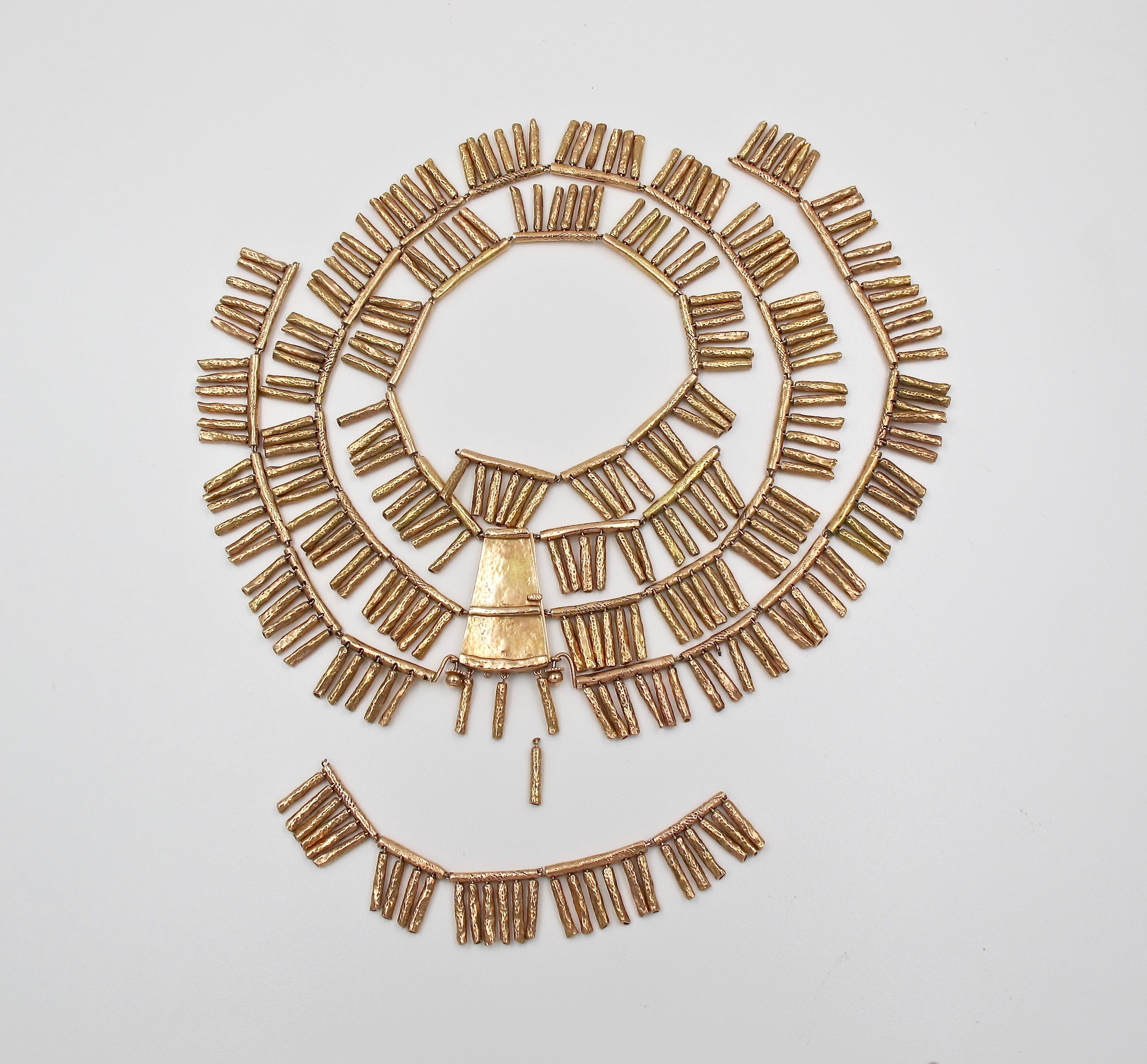
How Millicent Rogers Sunset Straws Necklace Was Made
I knew this repair would be really fun. It is a priceless work of art! Studying the necklace under a microscope showed me how it was built. Tests were done to make sure it was 14K. I know from studying Millicent’s notes that she loved red gold.
This necklace is made of 313 cast “straws” as Millicent calls them. I can tell that Millicent herself made the waxes for the links. My guess is that she had one of her jewelers in New York do the casting and manufacturing. Each link has a long tube on the top with 6 tubes dangling from it. This, consequently gives the whole necklace lots of movement. There were 3 tubes lost and 1 tube that had completely separated from the clasp. The necklace is heavy, with almost 14 ounces of gold in it. Therefore, it put a lot of stress on the jump rings holding each link together. There were over 30 broken jump rings that had to be repaired and 3 missing tubes had to be fabricated. I will show a close up of the broken links.
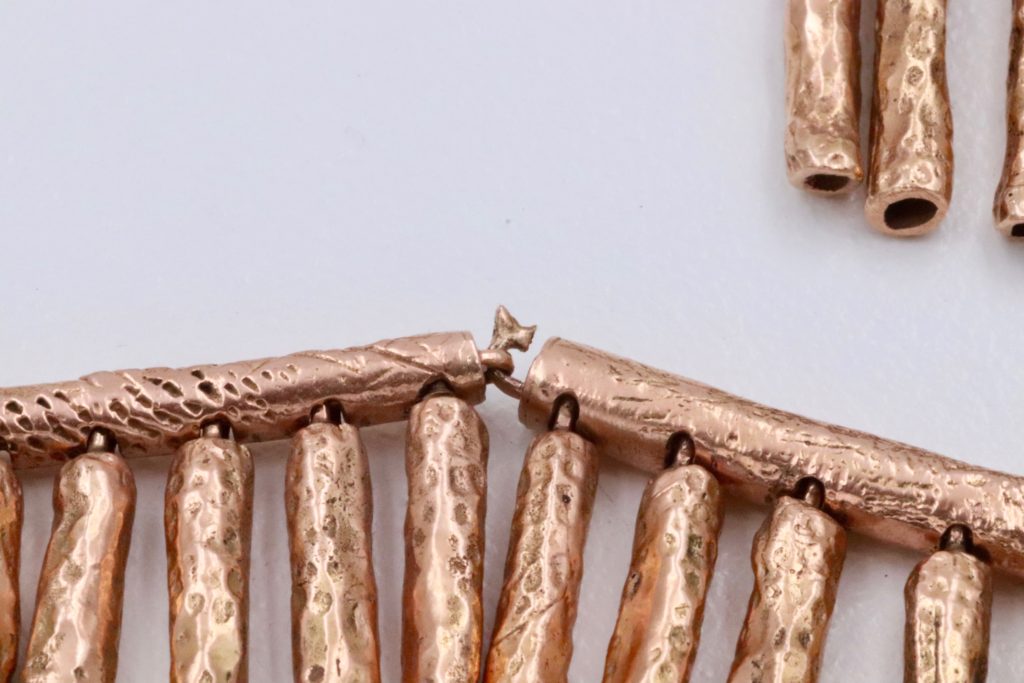
Previous Repair Work
Previous repair work has been done to this piece. Several of the links had either been lost or broken. I can tell from the color difference that the replacements were cast from 14K yellow gold and not rose gold. In the next photo it is very easy to see the color differences. There are other tell tale signs that this was a repair and not part of the original necklace.
When Millicent made the waxes for the castings she would roll the wax tube on a file and imprint that texture into the wax. In this next photo it is easy to see the texture. A small rounded punch was used to put dimples in the dangle elements. When I rebuilt the 3 missing pieces I had to make a tool that had the same texture as the originals.
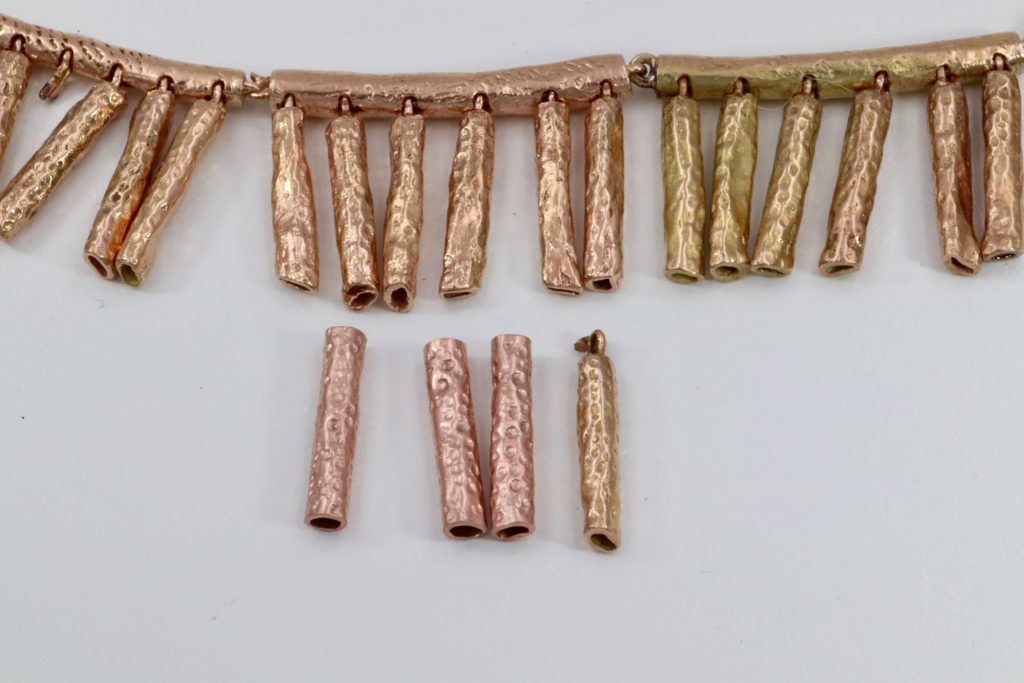
Repair Process
I used a Tig Welder to make the repairs. I did not want to alter any of the 80 year old original patina. Once the replacement tubes were made I placed them in position and welded the connecting links back together. The original tubes aren’t all the same alloy so I had to experiment with the placement of my new tubes to get them to blend seamlessly.
The clasp had several dangle pieces missing. One dangle had completely separated from the clasp and still had the jump ring attached. The color gold in the clasp looked as though it could have been both rose gold and yellow gold melted together but not mixed. This blotchiness could also just be a patina that has formed over the years. Millicent loved texture, the look of hammered gold and raw metal. The back of the pendant has incredible detail of tool marks, grinding, hammering and her logo stamp. The clasp is exceptionally manufactured.
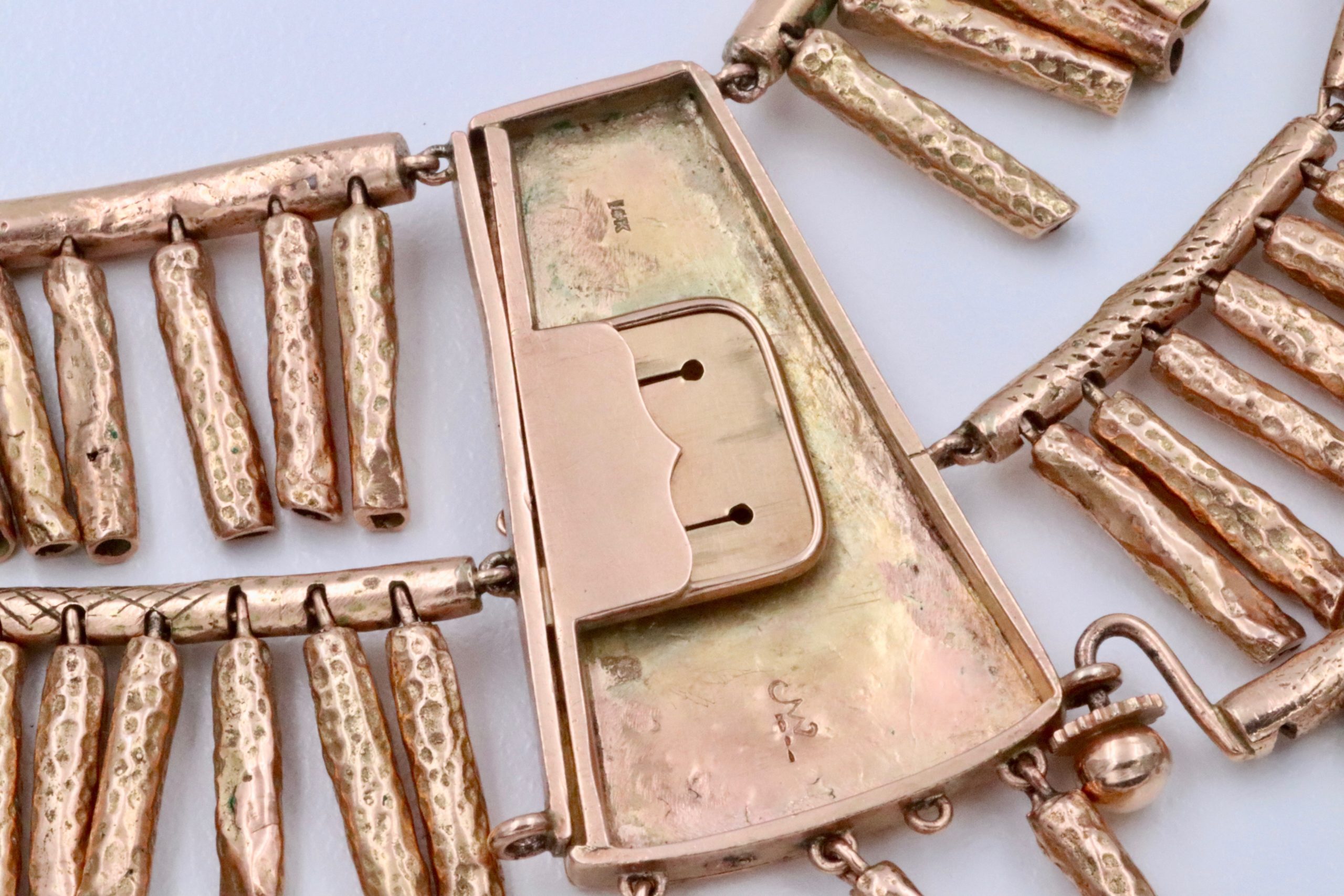
Conclusion
The finished necklace is now back in the Museum’s collection of original Millicent Rogers jewelry designs. I am thrilled that I have been in the place where I can restore it to a condition where it can be displayed and enjoyed by the patrons of the museum in the years to come.
For more information about the museum please visit their web site. www.millicentrogers.org.
